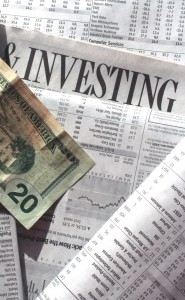Introduction to Contrarian Investing
Contrarian investing is the practice of basing your investment decisions on the opposite of the prevailing consensus. It is based on the idea that building consensuses can sweep investors up into a tide of irrational over-enthusiasm that results in too great a price change even if the trend has been in the right direction. For example, if people are rushing to sell shares in a particular corporation because that corporation is over-priced, that sudden rush will bring its share price crashing down below its rightful value. If you have the resources on hand, you can wait until that corporation’s share price has been brought to its nadir, snap up as many of its outstanding shares as possible, and then make a profit by reselling those shares once they’ve recovered their rightful value. Similarly, if people are rushing to buy a specific share or asset, you can either protect yourself by not doing the same or profit by selling it while its price is over-valued.
Contrarian Investing In Relation to Value Investing
Contrarian investing is often compared to value investing because the two seem so similar. Value investing is the practice of basing your investment decisions on purchasing under-valued assets. It is heavily dependent on the concept of intrinsic value, this being the value that an asset should have on the open market based on its unique qualities. Unfortunately, intrinsic value is something of a misnomer because there is no such thing as an objective measurement of an asset’s value. Investors can try to estimate the intrinsic value of an asset by using models and running calculations, such as finding the present value of its discounted cash flow, but no single model or calculation is capable of taking into account the entire market.
Although contrarian investing is also based on purchasing mispriced assets, it is much less concerned with calculations of an asset’s intrinsic value. Contrarian investors look to the prevailing sentiment about assets as much as they do the asset’s performance and inherent characteristics.
Examples of Contrarian Investing
One example of contrarian investing in practice is based on the usage of volatility indexes. The volatility of an asset is a measurement of how spread out the returns on that asset can be, making it a good indication of investor sentiment. If the volatility index is high, then investors are feeling jittery, and vice versa.
Another example is focused on purchasing and selling the Dogs of the Dow, these being the stocks on the Dow Jones Industrial Average with the highest dividend yield ratios. This strategy is based on the idea that blue chip companies don’t change their dividends to reflect their share prices, meaning that the Dogs of the Dow are often the most under-valued stocks on the index. As a result, practicing this strategy means systematically buying under-valued shares and then reselling them once their prices recover.
Risks of Contrarian Investing
The risks of contrarian investing are fairly simple and straightforward. Namely, you might be tempted into thinking that you’ve figured out the secret to investing and blindly use it in all situations and under all circumstances. Contrarian investing can go wrong if investor sentiment is either stronger than you anticipated or more right than you expected. If you blindly go for the contrary option in all cases, then you can miss out on profit opportunities and even lose money if you are not careful.
References:
http://www.investopedia.com/terms/c/contrarian.asp
http://www.investopedia.com/terms/v/valueinvesting.asp
http://financialhighway.com/five-risks-of-contrarian-investing/
Author Bio:
Guest post contributed by Charles Ronson. Charles is a freelance business writer. He has extensive experience as a business consultant. His articles appear on various investment blogs. Find out more about WongaBusiness.com who are specialists in short term business loans.
